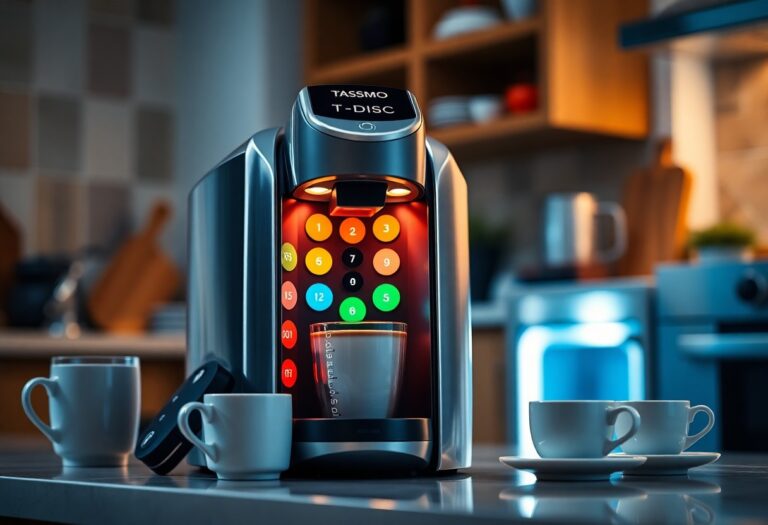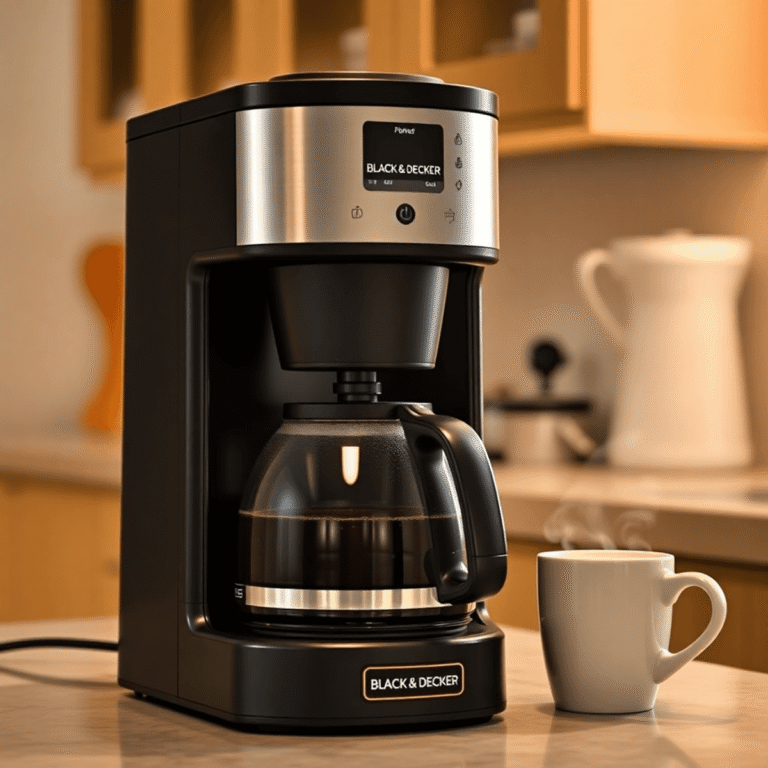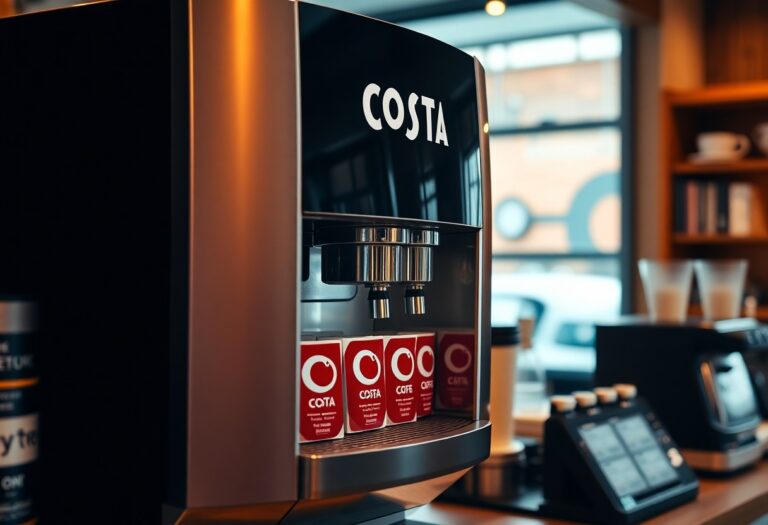How Does a Coffee Vending Machine Work – Commercial Mechanics
Coffee vending machines are a modern solution for satisfying your caffeine cravings conveniently and efficiently. Understanding the mechanics behind these machines can enhance your appreciation for the process, from grinding fresh beans to dispensing hot beverages at the press of a button. You’ll learn about the vital components, including how they mix ingredients and maintain cleanliness, ensuring a quality experience every time. For more insights into similar machines, check out this guide on How Does a Tea Coffee Vending Machine Work for Offices.
Key Takeaways:
- Coffee vending machines use a combination of brewing technology and automated systems to deliver fresh coffee to customers quickly and efficiently.
- They typically include built-in grinders, water heating systems, and mixing mechanisms that prepare various coffee drinks on demand.
- Many machines offer customizable options, allowing users to select their desired coffee strength, sweetness, and size.
- Payment systems in these machines can accommodate multiple transaction methods, including cash, credit/debit cards, and mobile payments.
- Regular maintenance is imperative to ensure optimal performance, including cleaning, restocking, and troubleshooting any mechanical issues.

Brewing Mechanisms: The Heart of the Machine
The brewing mechanism in a coffee vending machine is important for delivering quality coffee efficiently. By integrating various technologies, these machines are able to mimic traditional brewing methods while providing speed and convenience. Central to this process are the components that manage coffee grounds, water temperature, and brewing time, all working harmoniously to produce a consistent cup of coffee that meets consumer expectations.
The Process of Coffee Extraction
Coffee extraction involves dissolving ground coffee’s soluble compounds, releasing flavors and aromas. You can think of this as a delicate balancing act where the right amount of water is heated and pushed through the coffee grounds at optimal pressure. The extraction time varies based on the type of coffee and desired strength, but generally ranges from 20-30 seconds in these machines.
Heating Elements and Pressure Control
Heating elements within the vending machine make a significant impact on the extraction process. They heat water to precise temperatures, typically between 195°F and 205°F—an ideal range for coffee brewing. Simultaneously, pressure control systems ensure that water is pushed through the coffee at the right pressure, usually around 9 bars, optimizing flavor extraction. This combination of heat and pressure is what delivers a rich, aromatic cup of coffee quickly and consistently.
The interaction between heating elements and pressure control is sophisticated yet vital. When water reaches its target temperature, it must be introduced to the coffee grounds under consistent pressure to promote effective extraction. If the pressure is too low, the coffee may turn out weak and under-extracted, lacking depth. Conversely, excessive pressure can lead to bitterness and over-extraction. Balancing these elements allows the machine to deliver a high-quality espresso-style coffee in mere moments, catering to the demands of busy environments where flavor cannot be sacrificed for speed.
Ingredient Management: From Coffee Grounds to Flavorful Brews
Your coffee vending machine’s ability to deliver exceptional beverages hinges on effective ingredient management. From the precise measurement of coffee grounds to the careful blending of flavors, every step plays a pivotal role in crafting a satisfying cup. The internal mechanisms automatically select the right amounts of each ingredient, ensuring consistency in quality and taste. Properly overseen ingredient management enhances customer satisfaction and keeps them coming back for more. For deeper insights, consider reading How Do Coffee Vending Machines Work?.
The Role of Coffee Bean Storage and Dispensing
Storage and dispensing systems are vital to maintaining the freshness of the coffee beans. Vending machines often feature airtight containers to protect the beans from humidity and light, which can diminish flavor. Depending on the model, the machine may employ grinders that ensure the coffee grounds are freshly milled per order, resulting in flavorful, aromatic brews.
Water Quality and its Impact on Taste
Water acts as the main extraction medium in coffee production, making its quality imperative for achieving ideal taste. Hard water or water with high mineral content can alter the flavor profile, resulting in undesired bitterness or off-flavors. On the other hand, purified or filtered water can enhance the smoothness and richness of your brew, allowing the full character of the coffee to shine through.
Softened and filtered water helps maintain the delicate balance of coffee extraction. When combined with high-quality coffee beans, the right water can yield a crisp and bright taste profile. Factors like pH levels and mineral content directly impact the extraction process, influencing acidity and overall flavor. Machines equipped with water filtration systems can optimize this aspect, ensuring every cup of coffee brewed is tailored to meet your standards and those of your customers.

Payment Systems: The Technology Behind Transactions
Modern coffee vending machines incorporate advanced payment systems that streamline the transaction process, making it easy for users to enjoy their favorite beverages. These machines often support multiple payment methods, including cash, credit cards, mobile wallets, and contactless options, providing unparalleled convenience. By integrating technology such as NFC (Near Field Communication) and EMV (Europay, Mastercard, and Visa) for secure transactions, you can feel confident that your personal data is protected, while also experiencing smoother purchases.
Cash and Cashless Payment Integration
Successful coffee vending machines seamlessly integrate both cash and cashless payment options, catering to a diverse customer base. Coin and bill acceptors work in tandem with card readers, allowing you to choose your preferred payment method without hassle. This dual capability not only keeps the machine functional but also ensures that no customer is left without access to their caffeine fix.
User Experience: Interface Design and Accessibility
A well-designed user interface in coffee vending machines significantly enhances your experience. Touch-sensitive screens, clear visual instructions, and larger buttons improve accessibility, allowing for intuitive navigation. Effective use of icons and visuals minimizes confusion, enabling you to customize your drink selection with ease, from size to strength and milk options.
A focus on user experience drives the interface design of coffee vending machines. Companies often conduct user testing to identify preferences and pain points, ensuring the interface feels familiar and inviting. By incorporating features like multi-language support and audio instructions, machines accommodate a wide range of users, from tech-savvy individuals to those less comfortable with technology. Well-designed interfaces are not only visually appealing but also feature hardy materials to withstand frequent use, painting a comprehensive picture of the consumer’s journey from payment to sipping your favorite brew.
Maintenance and Troubleshooting: Ensuring Optimal Performance
Keeping your coffee vending machine in top shape involves regular maintenance and an awareness of potential issues that may arise. Routine checks and solutions can significantly enhance the longevity of your equipment and the quality of the beverages it dispenses. Prioritizing maintenance not only avoids unnecessary operational hiccups but also ensures that customers enjoy consistently great coffee.
Regular Cleaning and Care Protocols
Routine cleaning is vital for maintaining your coffee vending machine. You should schedule cleaning sessions at least once a week, focusing on components like the brewing unit, milk frothing systems, and the exterior. Using appropriate cleaning solutions prevents the buildup of coffee oils and residues, which can affect taste and machine performance over time. Ensure you follow the manufacturer’s guidelines for specific cleaning instructions.
Common Issues and How to Resolve Them
Common problems include clogging of coffee grounds, malfunctioning payment systems, and inconsistent beverage quality. Identifying these issues early is key to maintaining a smooth operation. For instance, if your machine fails to dispense coffee, check for clogs or low water levels. Regular software updates for payment systems can also prevent transaction errors.
Many operators face common issues such as the machine refusing to brew or payment processing errors. For clogs, disassembling the grinder and cleaning it every month can prevent coffee grounds from blocking the system. Ensure that the water reservoir is consistently filled; a simple oversight can lead to machine malfunctions. When resolving payment errors, running a diagnostic check on the software and updating it as necessary can save you from minor inconveniences that hinder revenue. Keeping a troubleshooting guide handy for quick reference aids in tackling these issues promptly, allowing you to maintain service quality effortlessly.
The Future of Coffee Vending: Innovations on the Horizon
As technology advances, coffee vending machines are evolving to enhance user experience and efficiency. You can expect to see machines integrating artificial intelligence and machine learning, allowing for personalized drink options tailored to your preferences. Additionally, contactless interactions and mobile app controls will become more prevalent, making your coffee acquisition even smoother and more flexible.
Smart Technology and IoT Integration
The integration of Internet of Things (IoT) technology is transforming coffee vending machines into smarter systems. These machines can now monitor inventory levels, track usage patterns, and even send alerts for maintenance needs. With IoT, you gain the advantage of real-time data, allowing for proactive adjustments and ensuring your coffee supplies remain uninterrupted.
Sustainability Trends and Eco-Friendly Practices
Sustainability is becoming vital in the design and operation of coffee vending machines. You might notice an increase in eco-friendly initiatives, like biodegradable cups and robust recycling options, allowing you to enjoy your coffee responsibly.
Focusing on environmental impact, manufacturers are implementing energy-efficient technologies that reduce the carbon footprint of coffee vending machines. Many new models utilize recyclable materials and offer compostable cups and lids, allowing you to minimize waste. Additionally, some machines even feature bean-to-cup systems that use less water than traditional brewing methods, optimizing resource consumption. By choosing these environmentally conscious options, you contribute to a healthier planet while enjoying your daily caffeine fix.
Summing up
Drawing together the mechanics of a coffee vending machine, you now understand how its intricate system delivers your perfect cup of coffee. By utilizing components like the brewing unit, water reservoir, and user interface, your machine efficiently processes your selections to provide a satisfying beverage. Familiarizing yourself with these functions can enhance your overall experience and ensure you appreciate the technology that makes your daily coffee ritual possible.
FAQ
Q: How does a coffee vending machine brew coffee?
A: Coffee vending machines typically operate through a series of automated processes. When a user selects their desired beverage, the machine first retrieves the respective coffee beans or grounds stored inside it. Depending on the machine, the coffee is either ground fresh or pre-measured. The water is heated to the optimal brewing temperature and then mixed with the coffee, creating a fresh brew. This mixture is then dispensed into a cup, and additional components such as milk, sugar, or flavorings can be added automatically if the machine is equipped to do so.
Q: What types of coffee do vending machines offer?
A: The variety of coffee available in vending machines can range widely based on the machine’s capabilities. Common options include espresso, cappuccino, latte, black coffee, and flavored coffees. Some advanced machines may also offer specialty drinks like mocha or iced coffee. Many machines also provide customization options, allowing users to adjust the strength of the coffee, add milk or sugar, or choose from various syrups and flavorings.
Q: How do coffee vending machines maintain freshness?
A: Freshness is maintained in coffee vending machines through several mechanisms. For machines that use whole beans, they often have a built-in grinder that only grinds the necessary amount for each drink, ensuring that the coffee is freshly ground. Additionally, many machines are equipped with storage compartments with airtight seals to minimize exposure to air and light, which can degrade the quality of coffee. Water used in the brewing process is typically heated on demand, preventing stagnation and ensuring that each cup is brewed with fresh ingredients.
Q: What maintenance do coffee vending machines require?
A: Regular maintenance is imperative for coffee vending machines to function properly over time. This includes routine cleaning of the brewing unit to prevent residue buildup, emptying and cleaning of spent coffee grounds, and checking water lines for blockages. Replacing filters and inspecting the machine for any wear and tear should also be performed regularly. Some machines may have automated cleaning cycles, but periodic manual maintenance is still necessary to ensure optimal performance and quality.
Q: Can coffee vending machines accept cash and card payments?
A: Most modern coffee vending machines are equipped to handle both cash and electronic payments. Machines usually feature a cash slot for coins and bills, as well as a card reader or mobile payment options such as NFC technology. This dual functionality provides convenience for users, allowing them to choose their preferred payment method. Some machines may also offer a loyalty program that rewards users for frequent purchases, integrating payment systems with customer relationship management software.







